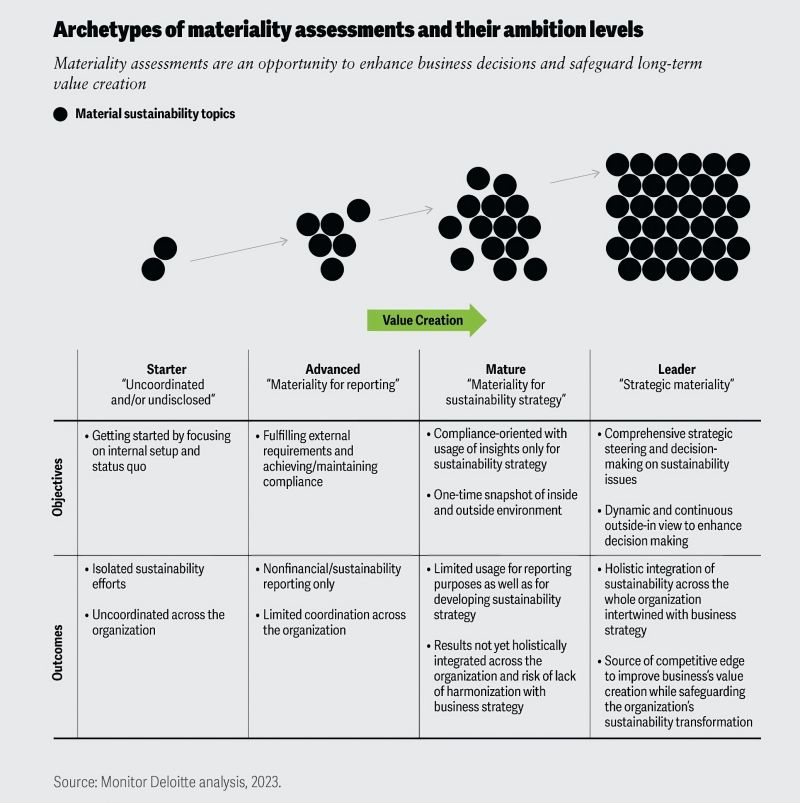Chart: Materiality Assessment Levels

This note from Antonio Vizcaya Abdo indicates this is sourced from Deloitte:
Materiality assessments, when executed with foresight and precision, can be pivotal in creating substantial value for corporations. They provide an essential foundation for understanding and prioritizing how sustainability issues can impact business operations and long-term strategic goals.
Beginning at the Starter level, corporations take their initial steps by focusing inward, mapping out their current practices and identifying basic sustainability issues. However, these early efforts typically lack a cohesive strategy and are often not communicated across the broader organization.
The Advanced level sees corporations starting to align their materiality assessments with external reporting demands. This phase is primarily compliance-driven, with an emphasis on meeting the requirements for nonfinancial disclosure. Although a step forward, efforts at this level may remain compartmentalized, with insufficient collaboration across different organizational branches.
As corporations evolve into the Mature stage, they utilize materiality assessments more strategically. The aim here is twofold: to achieve compliance and to extract valuable insights for shaping a sustainable strategy. Corporations begin to synthesize information from both internal and external environments, but the process may still lack full integration into all strategic facets of the company.
Corporations at the Leader level exhibit the most sophisticated approach to materiality assessments. They have a dynamic, ongoing process that incorporates a broad outside-in view. This allows them to continuously adapt and steer their strategies effectively, using materiality as a lens through which all business decisions are examined and made. It’s here that materiality is not just assessed but actively managed, contributing directly to the company’s competitive edge and value creation.
In conclusion, as corporations progress through these levels, materiality assessments evolve from a compliance exercise to a strategic tool that, if managed effectively, can lead to sustainable business practices that contribute significantly to the overall value proposition of the organization.
This journey highlights the transformative potential of integrating sustainability into the very core of business strategy, ultimately leading to enhanced decision-making and robust long-term value creation.
